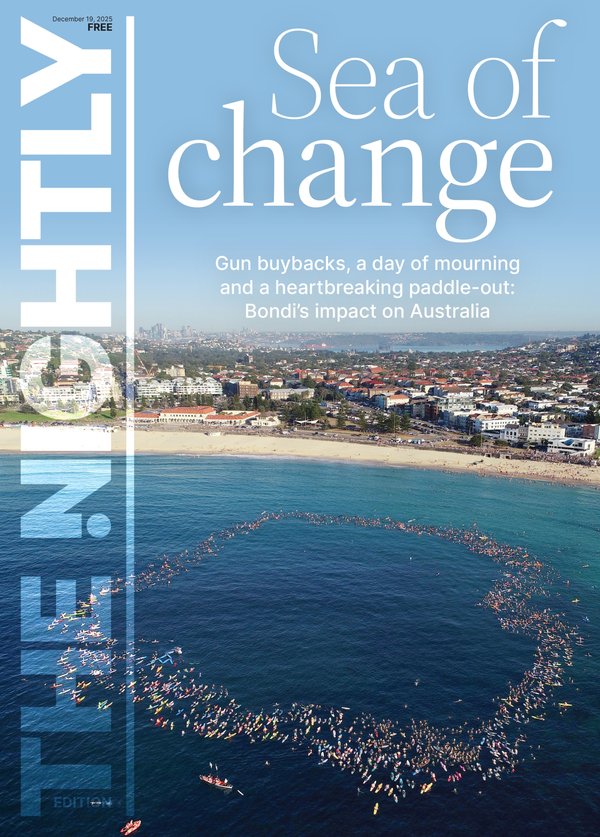Reserve Bank board raises inflation concerns, making Christmas rate cut less likely

Reserve Bank of Australia Governor Michelle Bullock doesn’t look like she’s going to be Father Christmas this year for millions of Australian borrowers.
Minutes of the central bank’s last interest rate-setting board meeting published Tuesday reveal board members are concerned prices may be rising faster than previously forecast, a crucial problem given fighting inflation is the Reserve Bank’s top priority.
Of the big-four commercial banks, only Westpac expects the Reserve Bank to cut rates at either of the last two meetings left in 2025.
Sign up to The Nightly's newsletters.
Get the first look at the digital newspaper, curated daily stories and breaking headlines delivered to your inbox.
By continuing you agree to our Terms and Privacy Policy.Ms Bullock has indicated a cut is unlikely at the next meeting, on Melbourne Cup day, if inflation accelerated in the three months ended September 30. The inflation figures are due out October 29.
Economists at the Commonwealth Bank, National Australia Bank and ANZ fear sticky inflation this year could delay another cut until next February at the earliest.
Uncertainty
Last week New Zealand’s central bank cut official rates by half a percentage point, citing a weak economy.
Australia has the reverse problem: unemployment is low and heavy government spending and immigration is contributing to inflation.
The Reserve Bank of Australia’s monetary policy board made a unanimous decision on September 30 to leave the cash rate on hold at 3.6 per cent.
The minutes of that two-day meeting suggest rate cuts could be delayed if the next set of inflation data contains bad news.
“The September quarter inflation outcome might be higher than the staff had expected in August,” the RBA said.
“They also highlighted the potential lessons for Australia from the experience of some other countries where services inflation has been elevated.”
The Reserve Bank noted while interest rates were dampening the economy, that didn’t necessarily mean another rate cut was warranted soon because their economists don’t know exactly at what level rates stop having an effect.
“Members observed that monetary policy was probably still a little restrictive but acknowledged the extent of restriction was difficult to determine,” the minutes said.
About half the businesses who talked to the Reserve Bank said it was hard to find staff. Unemployment in August was 4.2 per cent, which many economists consider full employment.
Expert opinion
Belinda Allen, the Commonwealth Bank’s head of Australian economics, said the minutes suggested another rate cut was unlikely until next year.
“We expect a cautious and data dependent RBA to continue for the rest of 2025 with no change to the cash rate,” she said. “If inflation data for the fourth quarter shows signs of moderating we expect the next cut to the cash rate in February 2026. The risk currently sits with no more rate cuts this cycle.”
NAB senior markets economist Taylor Nugent said a bad inflation number for the September quarter would make the RBA more inclined to pause rate cuts until May.
“Stronger than earlier expected Q3 inflation should leave the RBA on an extended pause as they rebuild confidence in the inflation outlook,” he said.
The RBA declined to cut rates on September 30 after monthly figures showed inflation in August growing by an annual pace of 3 per cent, putting it at the top of its 2 to 3 per cent target.
The most comprehensive June quarter inflation figures showed services inflation at 3.3 per cent.
Of the big-four banks, the Commonwealth Bank and ANZ expect the next cut on February 3 while NAB expects a cut on May 5.
How Australia compares
While the RBA hasn’t cut interest rates since August, when the cash rate fell to the lowest level since May 2023, other central banks have been providing relief to borrowers in September and October.
The Reserve Bank of New Zealand has this month cut interest rates by a whopping 50 basis points, taking it back to 2.5 per cent for the first time since August, 2022, in a nation where unemployment is at 5.2 per cent and inflation is 2.7 per cent.
The Bank of Canada last month cut rates 25 basis points to a three-year-low of 2.5 per cent to combat a 7.1 per cent jobless rate while inflation is 1.9 per cent.
The US Federal Reserve in September cut its benchmark Federal funds rate by a quarter of a percentage point to 4 per cent, for the first time since December, 2022.
Unemployment in the world’s biggest economy is at 4.3 per cent while inflation is at 2.9 per cent.

